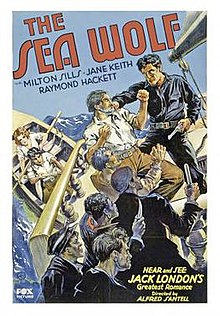
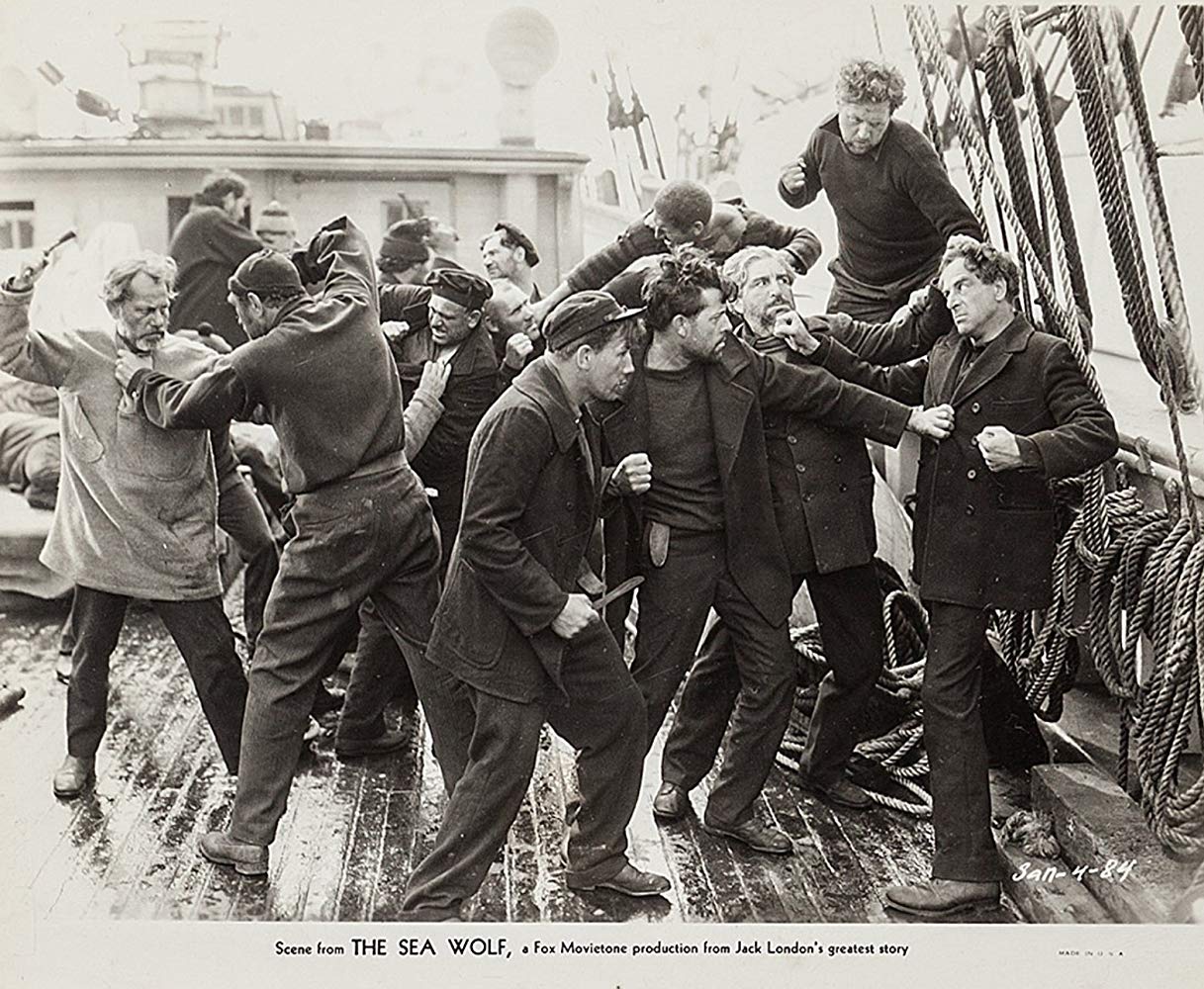
A pre-Code version of The Sea Wolf? What more could my cold-but-still-beating heart of darkness desire? MoMA gave me this wish this week when they screened the 1930 version of Sea Wolf, directed by Alfred Santell as part of their Fox retro program.
I’m a big fan of Jack London’s novel, and if possible, a bigger fan of the 1941 Sea Wolf, directed by Michael Curtiz, with a script by Robert Rossen and a stellar group of actors including Ida Lupino, John Garfield, and Edward G. Robinson, who plays Wolf Larsen.
In an effort to look at this pre-Code version with some measure of fairness, let’s compare the 1904 novel, the 1930 film and 1941 film together. London’s novel introduces one of the great characters in American literature, Wolf Larsen, as an archetype of masculinity gone wrong. London in his portrayal of Wolf Larsen’s hedonism and nihilism, shows us his critique of what can happen to a man staring into Nietzche’s abyss, in that he who fights with monsters will become a monster, and in the end, both spiritually and physically blind.
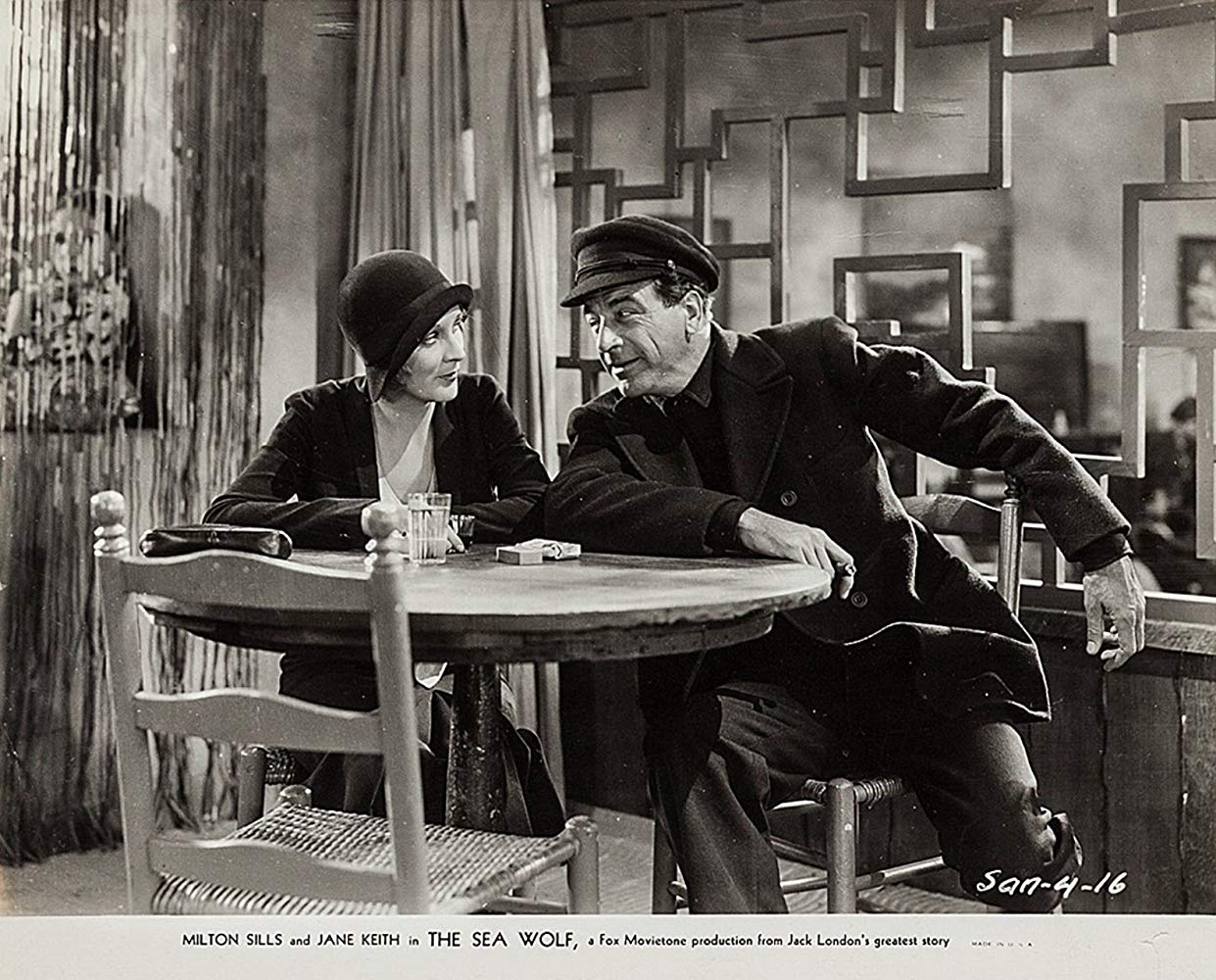
Jack London’s critique of masculinity is aptly carried out by Alfred Santell’s pre-Code version of the story. The film starts in the squalor of a San Francisco brothel, and soon an innocent (if jaded) youth Allen (Raymond Hackett) is clubbed and shanghaied to serve on the ship of Wolf Larsen (Milton Sills). Lorna (Jane Keithley), a prostitute who Allen has befriended, boards the ship in a misguided effort to protect Allen, but it soon is clear that one wrong move against Larsen could mean her own death.
In the novel – written in 1904- the hero (Humphrey van Weyden) is a talented but ‘unformed’ writer (in other words a stand-in for London) who is falls overboard after an accident at sea and is picked up by Larsen’s boat, The Ghost, as it heads out for seal-hunting. The novel features some of London’s best work – at least until he introduces another castaway, Maud Brewster, who is also a writer. At that point the story screeches to a halt as Humphrey and Maud exchange literary quotes with each other and realize they are soul-mates. This literary ‘love-fest’ would lead to Ambrose Bierce – in a review of the book – to write that as much as he liked the character of Wolf Larsen, he was forced to add, “I confess to an overwhelming contempt for both the sexless lovers.”
The mawkishness of the romance between Humphrey and Maud isn’t avoided by the 1930 version, even though the romantic lead Lorna, is now a prostitute. In the 1941 adaptation, Robert Rossen (in a decision that elevates this script from good to brilliant), splits the romantic lead into two parts, the passive and intellectual Humphrey (Alexander Knox) becomes the evolving conscience of the story, and the romantic lead duties are assumed by George Leach (John Garfield) who falls in love with (Ruth) Brewster (Ida Lupino) who is no longer a writer, but a woman with a past. To summarize what happens with the 1941 screenplay: Robert Rossen, a terrific screenwriter, cleans up some details lingering from the novel, and even adds a Casablanca-like spin of heroic sacrifice to the theme of the story.
The 1930 Sea Wolf is still worth watching and has two memorable scenes. The first is when Wolf Larsen, testing the greenhorn Allen, sends him high up on a mast to work the rigging. He’s clearly not up for this highly skilled job, and the crew take pity on him, until one sailor disobeys Larson to go up the mast and save Allen, even though it may cause his own death. The second scene involves the cook (John Rogers), who after dramatically losing his foot to a shark while being tortured by Larsen, finds his chance to get revenge on his captain. The scene of Rogers, crippled, and stumbling toward the captain with a hot iron in his hand, reminds me of the ending of Freaks, and this scene is one of the scariest and disturbing in the pre-Code canon. As an essay on toxic masculinity, the 1930 Sea-Wolf gives a complete and convincing lesson, at least until the last minute, where as often happens in a pre-Code film, there is a vague (and best forgotten), nod toward redemption.
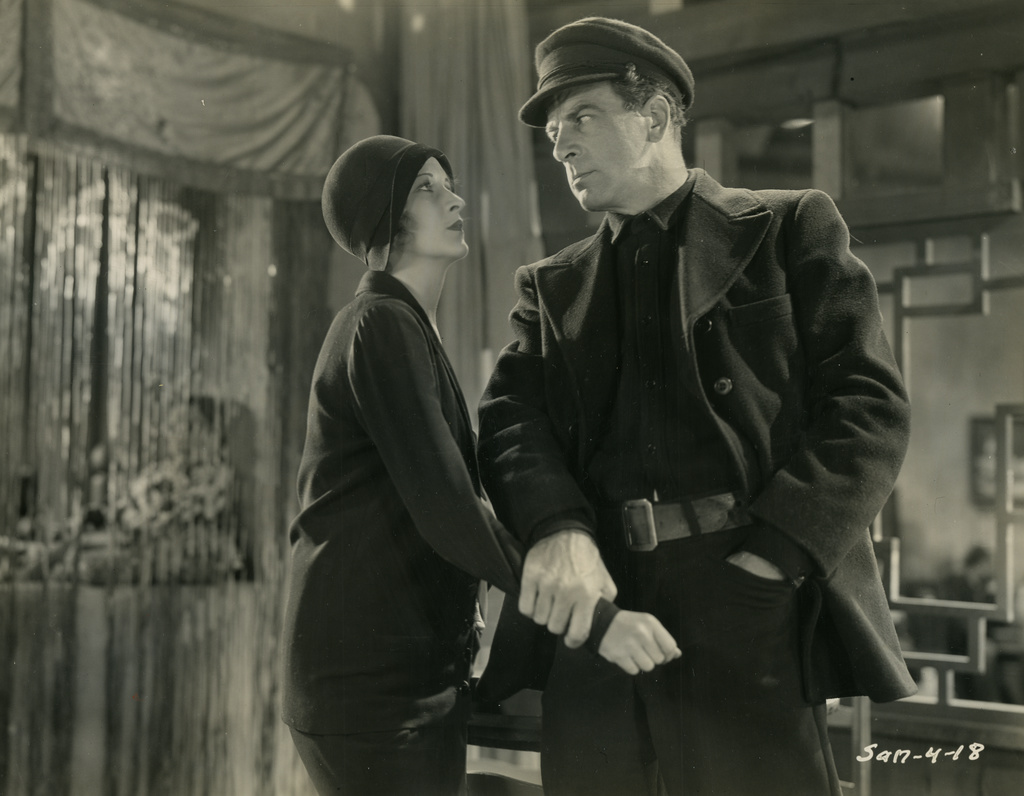
The great weakness of this version of the 1930 Sea Wolf is Milton Sills portrayal of Wolf Larsen. Sills may have been the right person on paper to play this iconic role (before getting the acting bug, he was a college professor), but his performance is completely external. His version of Wolf Larsen is one of an angry blowhard.
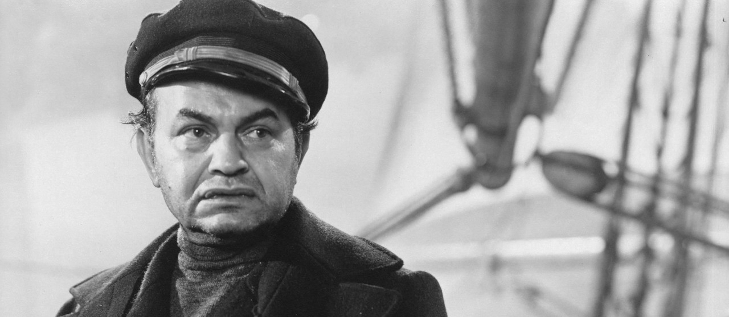
By contrast, Edward G. Robinson, who plays Larsen in the Curtiz film, understands that quiet menace is always scarier in the end – his Larsen is one of sardonic humor laced with brutality and meanness. In one of his greatest roles (and he had many), Robinson plays Larsen as a man who has stared into the abyss, seen the hollowness of his own soul, and no matter how desperately he tries to convince himself, knows he is now the monster.




4 thoughts on “A Pre-Code Sea Wolf?”
Lokke–glad to see you’re getting more writing up AND hope to see you in Rochester!
Ken
Hope to see you there!
Thanks for this thoughtful article, I learned a lot and I’m also a fan of the novel and especially the 1941 film. I saw it was added to TCM’s on demand this morning and re-watched it which sent me down the rabbit hole looking for articles and I found this… I had no idea there’s a precode version now I am very intrigued! It’s hard to improve on the classic 1941 version even if I feel Van Weyden gets the short end of the stick- if he was going to sacrifice himself I almost feel some kind of minor subplot involving some inner turmoil or need for purpose would have made his ending less tragic. Otherwise, it holds up fantastically and I regret not seeing it when Film Forum played it.
Hi William, thanks so much for your comments. Agree with everything you said, saw the Curtiz version at FF and the restored version on a big screen was a huge delight. Perhaps the restored version has a little more Weyden footage, or maybe his character arc is more obvious on the big screen? In any case, I think Curtiz and his writers got the chance to take a classic book and ‘fix’ the novel’s (glaring) deficiencies, and how often does that happen. Actually, with Curtiz at the helm, it happened a lot! Let’s hope it gets another screening at a local theater.